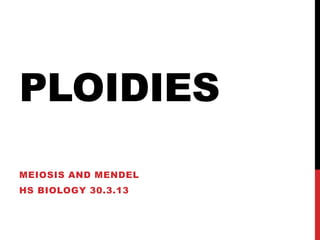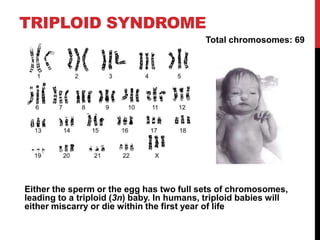1) Meiosis produces haploid sex cells from diploid body cells, separating homologous chromosome pairs and sister chromatids in two steps.
2) Nondisjunction during meiosis can result in gametes with an abnormal number of chromosomes, potentially leading to conditions like Down syndrome.
3) Complete nondisjunction produces gametes with a full extra set of chromosomes, which if fertilized could result in conditions like triploid syndrome, though these are often fatal in humans. Polyploidy has occurred and been beneficial in some plant species.













